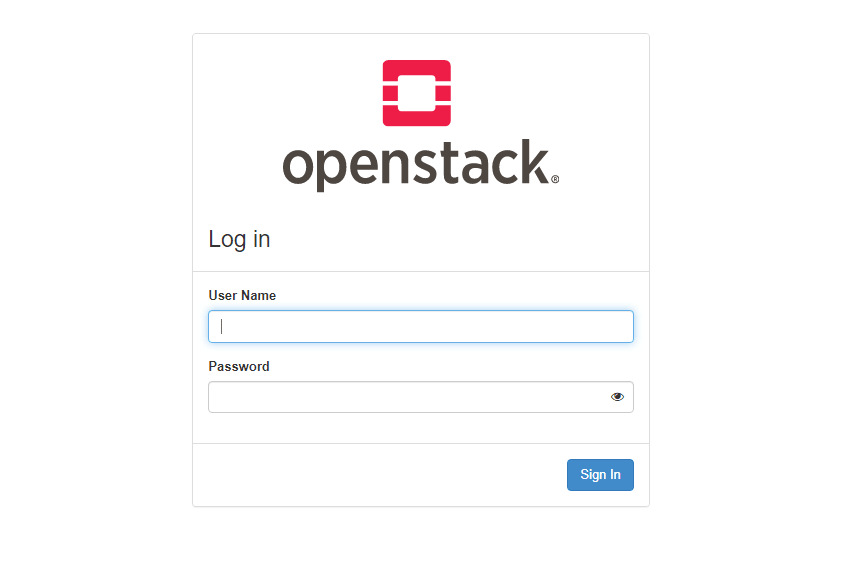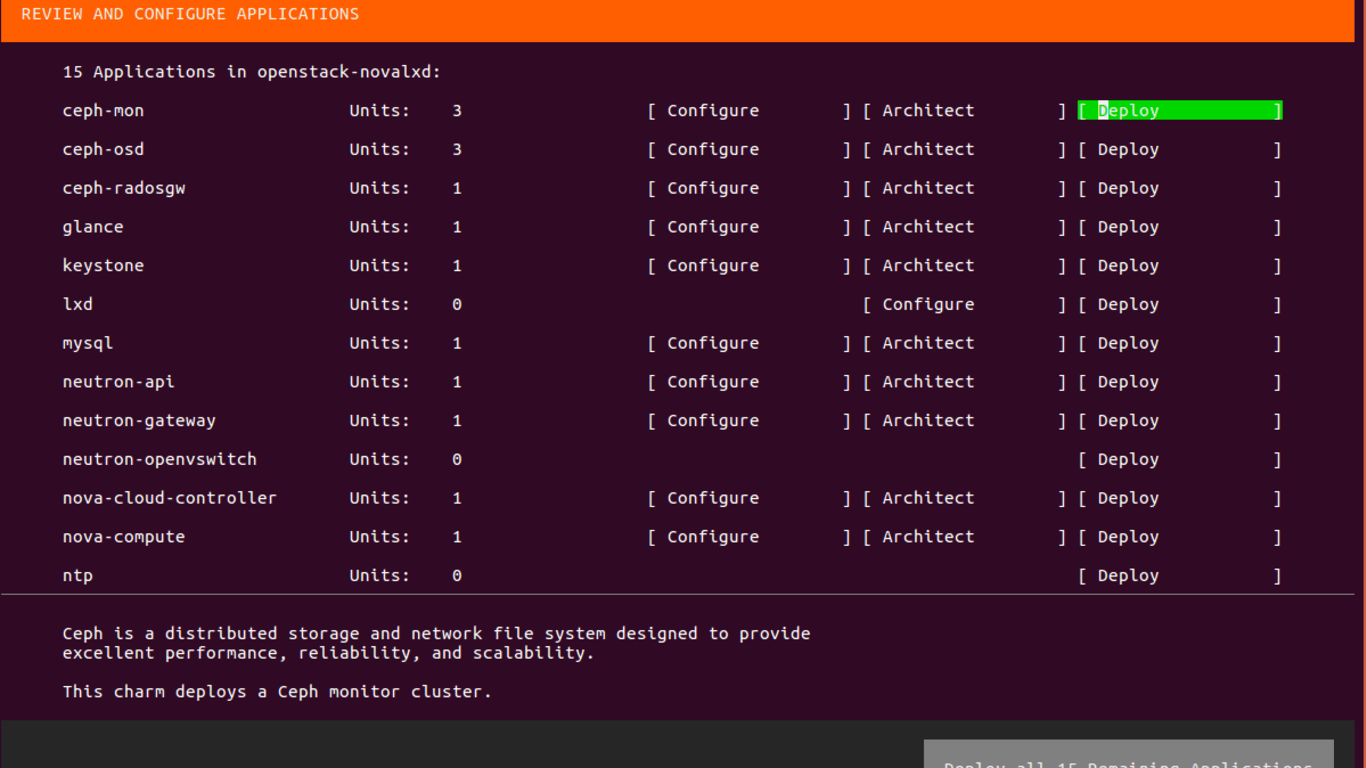
| ID | Binary | Host | Zone | Status | State | Updated At |
#CONJURE UP OPENSTACK DEFAULT LOGIN PASSWORD#
Please enter your OpenStack Password for project admin as user admin: openstack
#CONJURE UP OPENSTACK DEFAULT LOGIN INSTALL#
Exploitation Installation des outils client OpenStack sudo snap install openstackclients -classicĬonnexion à l'interface Web via transfert de port SSH Figure 43 : Connexion à l'interface Web via transfert de port SSH Figure 44 : fichier admin-openrc.sh Chargement du profil. Figure 42 : Your deployment is now complete Login to Horizon: l: │ġ1.

Déploiement Figure 40 : Choix d'applications Figure 41 : Juju Controller is initializing. "Choose Cloud: localhost" Figure 37 : Choose Cloud: localhost Figure 38 : Select a network bridge and storage pool for this deployment Figure 39 : SSH public key path 10. "Spell Selection: OpenStack with NovaLXD" Figure 36 : OpenStack with NovaLXD Lancement de conjure-up if then cat /dev/zero | ssh-keygen -q -N "" > /dev/null fi conjure-up openstack Installation de conjure-up sudo snap install conjure-up -classicĩ. To migrate your existing client configuration, move ~/.config/lxc to ~/snap/lxd/current/.config/lxcĨ. You may need to close your current shell and open a new one to have the "lxc" command work. The migration is now complete and your containers should be back online.Īll done.

The source server is empty, no migration needed. Migration de LXD sudo /snap/bin/lxd.migrate -yes Type: "" storage_pools: - config: size: 40GBĭescription: "" devices: eth0: name: eth0Ĭluster: null 7. Would you like a YAML "lxd init" preseed to be printed? ( yes/ no) : yes config: ĭescription: "" managed: false name: lxdbr0 Would you like stale cached images to be updated automatically? ( yes/ no) Would you like LXD to be available over the network? ( yes/ no) : What IPv6 address should be used? (CIDR subnet notation, “auto” or “none”) : none What IPv4 address should be used? (CIDR subnet notation, “auto” or “none”) : Would you like to create a new local network bridge? ( yes/ no) : Would you like to connect to a MAAS server? ( yes/ no) : Size in GB of the new loop device ( 1GB minimum) : 40GB Would you like to use an existing block device? ( yes/ no) : Name of the storage backend to use (btrfs, ceph, dir, lvm) :Ĭreate a new BTRFS pool? ( yes/ no) :

Would you like to use LXD clustering? ( yes/ no) :ĭo you want to configure a new storage pool? ( yes/ no) : Création d'un pont local /snap/bin/lxc network create lxdbr0 ipv4.address=auto ipv4.nat= true ipv6.address=none ipv6.nat= false 6.

Ajouter de l'utilisateur stack dans le groupe LXD sudo usermod -a -G lxd stackĥ. Installation de lxd sudo snap install lxdĤ. Préalables echo "stack ALL=(ALL) NOPASSWD: ALL" | sudo tee /etc/sudoers.d/stackĮxit 3. Installation dans une VM ESXi 32 Go RAM, 16 vCPUs, 128 Go HD, réseau naté 1.


 0 kommentar(er)
0 kommentar(er)
